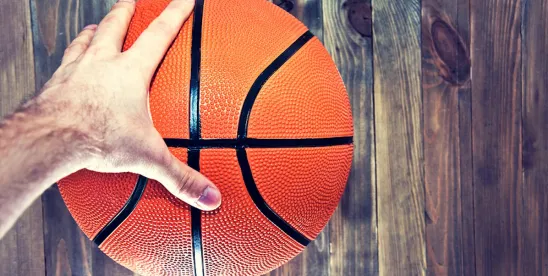The Past
Every seven years, the National Basketball Association (NBA) and the National Basketball Players Association (NBPA), the labor union representing NBA players, come together to negotiate a Collective Bargaining Agreement (CBA) that sets out the minimum terms and conditions for all NBA players as well as the respective rights and obligations of the league, its teams, and the NBPA. The CBA’s purpose is to govern crucial issues such as salary structure, revenue sharing, free agency rules, player benefits, disciplinary procedures, dispute resolution mechanisms, and more. By collectively bargaining, both sides operate within the National Labor Relations Act (NLRA) structure, which grants legal protections for union activities and establishes mechanisms for addressing labor disputes. Equally important, both the NBA and NBPA are required under the NLRA to bargain in good faith. Any disputes regarding the salary cap or apron rules – including their application, exceptions, or alleged circumvention – are subject to the grievance and arbitration process established by the CBA, which helps to ensure predictability in enforcement. Importantly, collectively bargained agreements are generally shielded from antitrust liability under the “non-statutory labor exemption,” allowing the league to impose salary caps and other restrictions that would otherwise be considered “restraints of trade.” But broadly speaking, the CBA establishes uniform employment standards across the NBA and ensures competitive balance across its 30 (and potentially 32) teams.
What’s New
At the center of the most recent 2023-2024 CBA is Article VII: “Salary Cap, Minimum Team Salary, Tax Level, Apron Levels, and Draft Pick Penalty.”
In previous CBAs, NBA teams have been restricted in their player spending by only two “soft” ceilings: the Salary Cap and the Tax Level. Both ceilings are dependent on the projected Basketball Related Income (BRI) for the league. The BRI calculation is extremely complex and nuanced, but broadly put, is the total revenue generated by the NBA and its teams in a given season. The Salary Cap is 44.74% of the projected BRI for that year, less projected Benefits for that same year, divided by the number of teams scheduled to play in the NBA during that year. [1]. Benefits means “the sum of all amounts paid or to be paid on an accrual basis during any Salary Cap Year by the NBA or NBA teams.” [1]. The Salary Cap determines the maximum amount an NBA team may spend on players without incurring any taxes, restrictions, or penalties. For context, the 2025-26 season, the Salary Tax is $154,647,000. The Tax Level, colloquially known as the Luxury Tax, is 121.5% of the Salary Cap. This number establishes the threshold which, if crossed, incurs tax that is paid by such team to NBA League Office. Such tax is then either redistributed to lower payroll teams or goes to fund NBA-wide initiatives. In practice, a team that spends between $1 and $4,999,999 above the Tax Level pays an additional $1.50 for each dollar spent. Teams spending between $5,000,000 and $10,000,000 above the Tax Level must pay $1.75 per dollar spent. The tax per dollar grows by $0.25 with each $5,000,000 increment spent. [1, 2]. For the 2025-26 season the Tax Level is $187,895,000. Additionally, special provisions are found throughout the CBA. For example, for “repeat offenders” of the Tax Level (teams who have paid luxury taxes in three of the last four years), the initial tax penalty begins at $2.50 instead of $1.50 and follows the same incremental increase. [2].
These soft caps worked well as a barrier to overspending and helped to maintain a competitive balance among the teams in the NBA for many years. But in the 1990s and 2000s, the NBA became a global league with a rapidly growing international fanbase. The 1992 USA Dream Team made its debut in Barcelona, winning gold, but most importantly, the larger-than-life personalities of NBA superstars such as Charles Barkley and Michael Jordan won the hearts of new NBA fans across the globe. Michael Jordan led the Chicago Bulls to six championships, Kobe Bryant led his team to five, and the emergence of a new superstar, LeBron James, allowed the NBA to retain and further grow the domestic and international fanbase. Why is this significant? Because exponentially increasing revenue and brand recognition in consecutive years directly translated into three things. One, an increase Basketball Related Income and consequently, an increase in the Salary Cap and Luxury Tax. Two, new and rapidly growing revenue streams for individual teams (who negotiate their own TV and media rights deals) increased the amount of available capital to spend on players and development. And three, NBA teams became highly sought after investment assets for high-net-worth individuals and investment groups, which further deepened the pool of capital available in the NBA.
This investment strategy has proven effective, as the average value of an NBA franchise in 2001 was $207,000,000. In 2024, it rose to $4,416,000,000. [5]. Somewhat predictably, players wanted a bigger share of the revenue, and teams were willing to pay them in order to keep their teams relevant and marketable, both domestically and abroad. For example, the salaries for NBA superstars, Earvin “Magic” Johnson and Kareem Abdul-Jabbar, in the 1980s ranged in the low seven figures. [3] By the end of Jordan’s championship winning era in 1997, his on-court salary was $33,140,000. [4].
Consequently, teams backed by billionaires and capital-rich investment groups outcompeted (and outspent) small-market teams in acquiring superstar talent. Cash-poor, small-market teams are often forced to improve their rosters through the draft, acquisition of average or aging players through trades, and the buyout market. The benefit gained from paying exorbitant player salaries exceeded the cost of breaching the “soft” ceilings. Competitive balance established by the “soft” caps no longer functioned as efficiently as originally intended. Thus, two new ceilings were introduced: the “First Apron” in 2011 iteration of the CBA and the “Second Apron” in the most recent, 2023 CBA. The purpose of the aprons is identical to the Salary Cap and Tax Level – to add stricter limitations on high spending teams and bring competitive parity back to the NBA. However, the apron’s key difference is that penalties are no longer just monetary, but punitive. For example, the First Apron, set at $195,945,000 for the 2025-26 season, transforms into a “hard” cap if a team signs a player using one of three important instruments designed to help a team spend deeper into the Tax Level: sign-and-trade, non-taxpayer mid-level exception acquisition, acquisitions via bi-annual exceptions. [1, 2, 8].
The Second Apron is the CBA’s newest and harshest set of penalties. In an NBA franchise’s toolbox, teambuilding via the annual draft is an extremely important, if not the most important tool. For small-market, poor-preforming teams, draft picks are their best chance to secure a franchise superstar. For teams on the opposite end of the spectrum, draft picks are bundled in trade packages to acquire superstars or essential role players to support superstar(s). Either way, without unrestricted rights to their draft picks, teams are crippled in their ability to build competitive, championship contending teams. The Second Apron, set at $207,824,000 for the 2025-26 season, does exactly that. If a team crosses the Second Apron threshold, it will lose complete access to the mid-level exception, the ability to trade their first-round draft picks seven years into the future, the ability to acquire players in return when the team chooses to sign-and-trade its own free agents elsewhere, and the ability to aggregate contracts in trades and the ability to send straight cash out to teams in trades. [1, 6]. Furthermore, if a team is in the Second Apron twice in a four-year span, the team’s first round draft pick will automatically fall to the bottom of the first round. These harsh penalties have completely changed the landscape of NBA teambuilding strategy. Teams now prioritize staying below the Second Apron over retaining key or even superstar players. Because the bet of staying competitive in the present season will most likely tie up a franchise’s ability to be successful for multiple seasons or even a decade. With a tighter belt around the team’s spending ability, teams have been forced to part ways with superstar players. [7]. This also means injuries to superstars, like Tyrese Haliburton of the Indiana Pacers, force competitive teams with a big payroll to choose between keeping that injured superstar or letting go of key pieces that surround that core superstar. In the 2024-25 season, in which the Second Apron was set at $188,931,000, the Phoenix Suns’ roster boasted three superstars with max contracts, totaling $150,588,751. [9]. The front office was left with just $38,342,249 to fill 12 remaining roster spots. This led to a lack of bench depth, keeping the team out of the playoffs entirely. Now, in the offseason following this historically spectacular downfall, the team’s front office is now unloading its superstars (and superstar-level) contracts that the team worked so hard to get. The Second Apron is working.
Although the salary caps and aprons, on their face, seem to violate antitrust laws, the Supreme Court has interpreted the non-statutory labor exemption to mean that, as long as wage restraints and similar rules derive from bona fide collective bargaining, they are largely immune from antitrust claims (see Brown v. Pro Football, Inc., 518 U.S. 231 (1996)). This is a central reason why the NBA’s salary cap and apron penalties remain enforceable despite their significant impact on its teams and players. Therefore, the NBA and NBPA are both acting within the NLRA when negotiating and agreeing upon salary caps, spending limits, or any other limitations imposed on player employment terms. As a result, big spending teams most disadvantaged by the Second Apron concept are unlikely to be successful in contesting the structure.
What’s Next
Regardless, if a team builds through the draft (i.e., obtaining high quality players on less expensive contracts) and is successful, they will, for the foreseeable future, stay under the apron and have the flexibility to improve over the long term. But if a team pursues an aggressive, win-now strategy, paying high salaries to multiple, established players and prioritizing short term success, the team will lose its potential to grow. Keeping in mind that the NBA and NBPA continuously adapt to changing revenue models (e.g., international streaming, gambling partnerships), the spend-to-win days are over, and the era of teambuilding efficiency and long-term growth potential is here.
FOOTNOTES
[1] 25da5eb0-15eb-11ee-b5b3-fbd321202bdf-Final-2023-NBA-Collective-Bargaining-Agreement-6-28-23.pdf
[2] NBA Salary Cap, Luxury Tax, 1st & 2nd Apron explained
[3] How the NBA salaries grew 12,546 times over the last 50 years — OhMyEcon
[4] Michael Jordan NBA Salary | HoopsHype
[5] NBA average franchise value 2024| Statista
[6] The NBA’s second tax apron and how it’s breaking your favorite teams apart, explained
[7] NBA Salary Cap for 2025-26 season set at $154.647 million – NBA.com: NBA Communications
[8] 2024-25 Phoenix Suns Cap Table
This article was co-authored by Oscar Kuo



 />i
/>i

